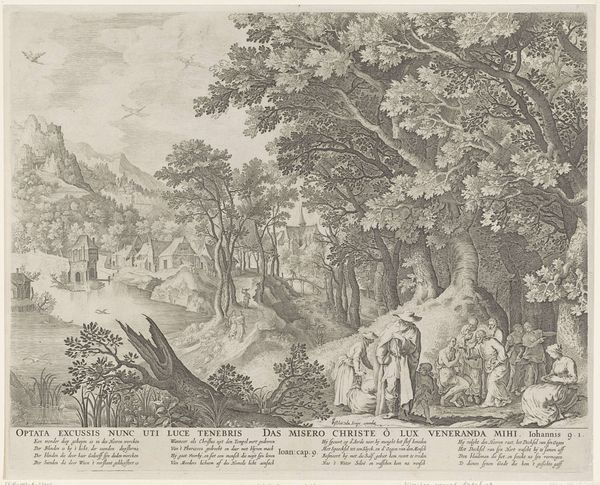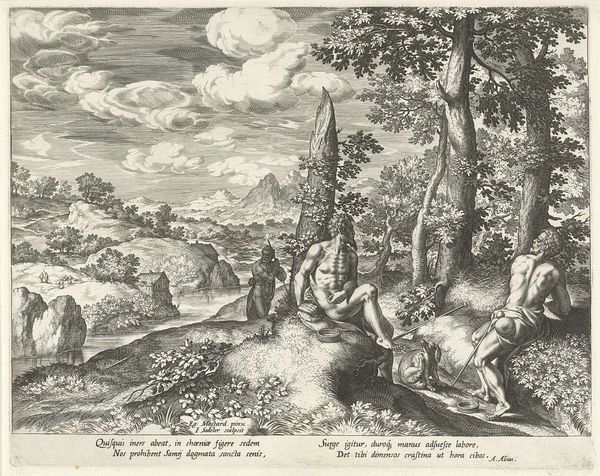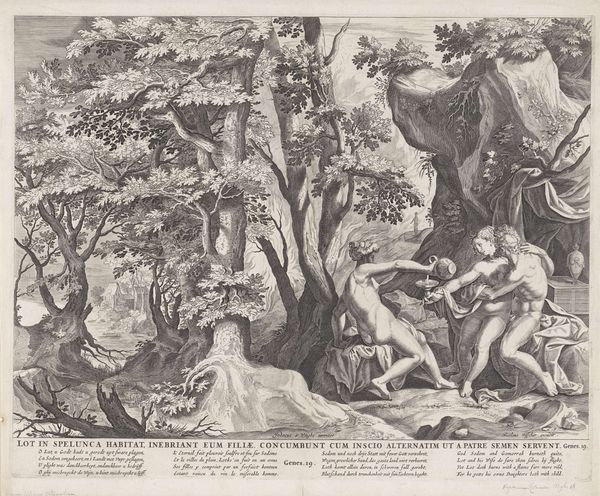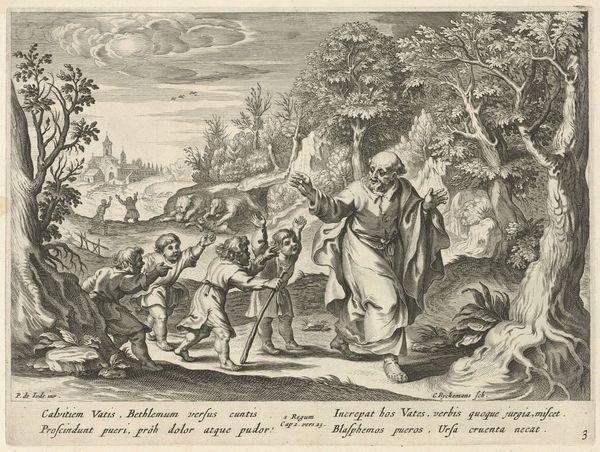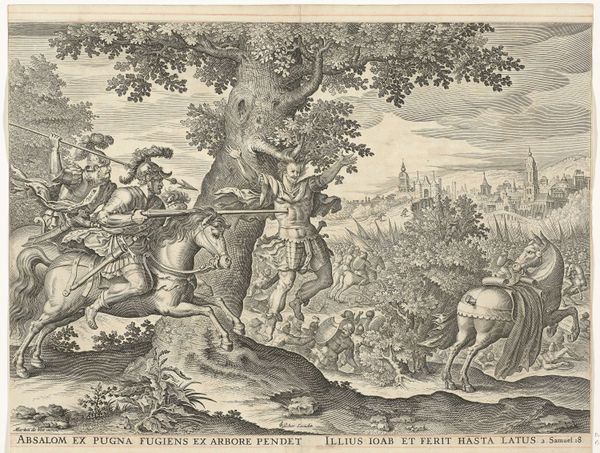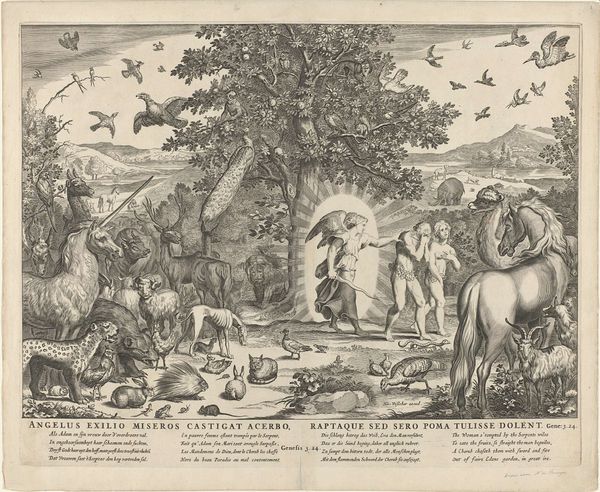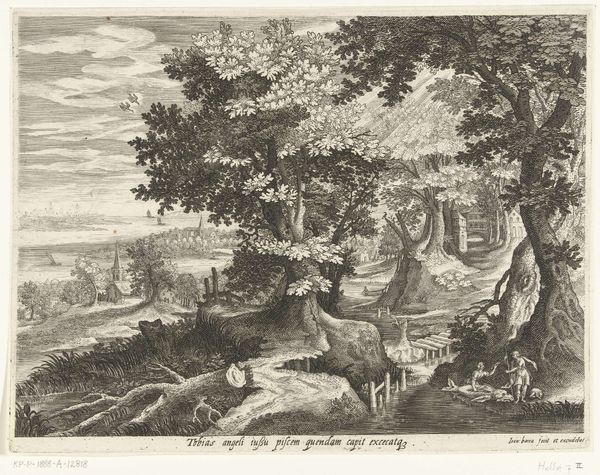
print, engraving
#
baroque
# print
#
old engraving style
#
landscape
#
figuration
#
history-painting
#
engraving
Dimensions: height 404 mm, width 510 mm
Copyright: Rijks Museum: Open Domain
This is an anonymous engraving called 'The Reconciliation of Jacob and Esau', and is held here at the Rijksmuseum. Representing a scene from the Book of Genesis, the image derives its meaning from a shared religious culture across Northern Europe at the time. The artist presents a vision of social harmony through reconciliation. But it also highlights the anxieties of the time. The brothers had been estranged, their relationship marred by jealousy and deceit. What does it mean to represent this in the context of 17th century Netherlands? The act of reconciliation carries significant political weight here. The Netherlands, a relatively new republic, was emerging from a period of intense internal division and conflict with external powers. Seen in this light, the image serves as a visual argument for social cohesion, emphasizing the importance of forgiveness for the health of the nation. To understand such images, we must reconstruct the specific context in which they were made, using historical sources such as pamphlets, sermons, and political tracts. This artwork reflects a society grappling with its own identity and future.
Comments
No comments
Be the first to comment and join the conversation on the ultimate creative platform.


